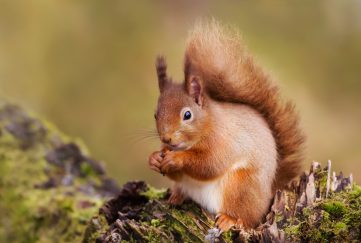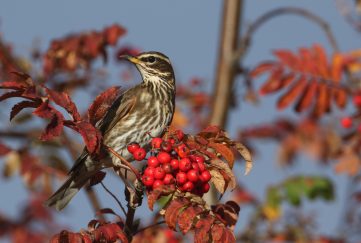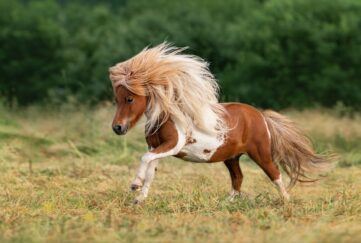Wonder At The Willow – Jim Crumley
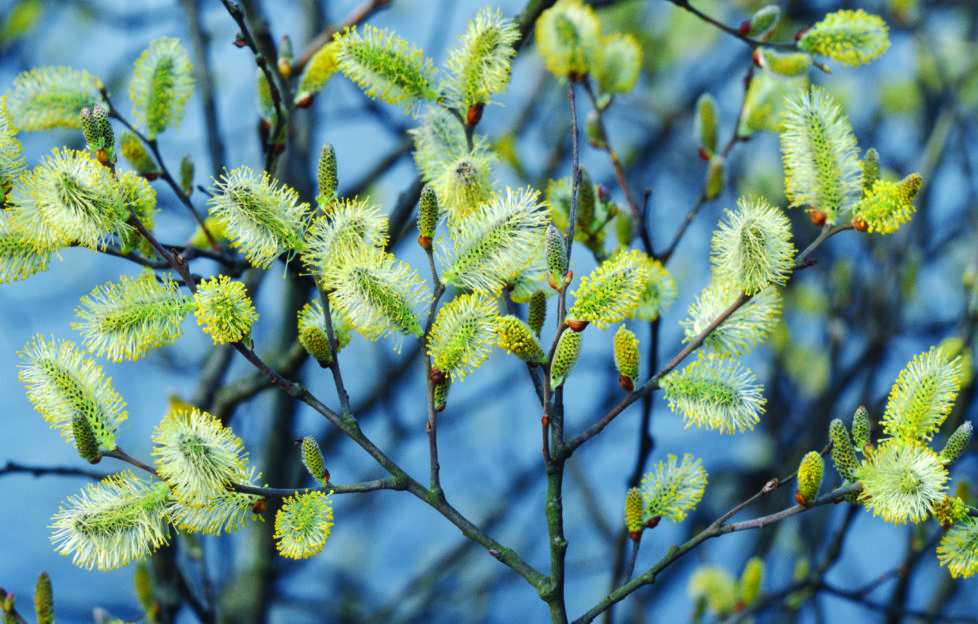

This adaptable tree is a vital part of many Scottish ecosystems, as Jim Crumley explains
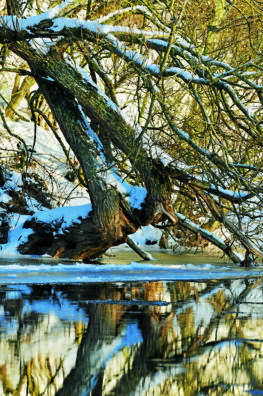 FOUR THOUSAND feet up on Braigh Riabhach where the Wells of Dee gurgle miraculously out of the mountain’s unguessable granite innards to embrace the overworld of the Cairngorms plateau, one of the first signs of life it encounters is a squirming mat of leaves about half-an-inch high. Very little of what lives up here is as it seems: it’s a willow tree.
FOUR THOUSAND feet up on Braigh Riabhach where the Wells of Dee gurgle miraculously out of the mountain’s unguessable granite innards to embrace the overworld of the Cairngorms plateau, one of the first signs of life it encounters is a squirming mat of leaves about half-an-inch high. Very little of what lives up here is as it seems: it’s a willow tree.
Three-thousand-nine-hundred feet lower, and a hundred miles further south, and with its roots sunk in the edge of an overgrown pond in a Stirling woodland, is one of the handsomest willow trees you will ever see. It is about eighty feet high, or at least it was once, but now it leans towards the east because the morass where it rooted is not the securest of footholds.
Fortunately, nature has come to its aid. It is propped up at a rakish angle by the most securely anchored and robust of all Scotland’s bog-dwellers, an alder tree. Alders love water. The crannog builders knew that 3000 years ago, which is why they built their water-borne homes on piles made from alder trunks. By comparison, keeping an elegant willow tree aloft is child’s play.
“In very different ways, these two
extremes of willow habitat are central to my life.”
The first is what I think of as the Scottish landscape at its utmost. If you grew up in Dundee, and found your way to the mountains by way of a years-long apprenticeship (the Sidlaws, the Angus Glens, the sky-tending highway of Jock’s Road), then the Cairngorms will always represent the ultimate landscape, the spreadeagled temptress on your ultimate northern horizon.
When I finally reached the plateau of Braigh Riabhach for the first time, with its summer snowfields and the Wells of Dee and the half-inch high willow trees, and the disappearing trick of the dotterel, it seemed to be a place of miracles. To the nature writer I have since become, it is as near to heaven on earth as makes no difference. And it is still a place of miracles.
The second habitat, where that Lowland willow leans up out of its very own wetland, is a few yards from a quiet footpath. Most days of most weeks when I am at home, I walk the path on my way to the paper shop. The three-mile, round-trip walk past the willow keeps the walking muscles in trim and gets the blood flowing. It is no coincidence that the same walk puts the winter-white plateau of the Ochils across my northern horizon, an early morning invitation to my awakening mind to rummage among northern places near and far, among hill and mountain plateau lands from the modest to the miraculous. So one way or another, I have a soft spot for willow trees.
“Few plants endure greater adversity”
The plateau-dweller is variously known as dwarf willow, snowbed willow or least willow (salix herbacea). It is a creeping woody plant, which occasionally heaves itself up to a height of two-and-a-half inches, but mostly it amounts to rather less than half that. Few plants endure greater adversity as a way of life. Here is the immortal Seton Gordon, writing in The Cairngorm Hills of Scotland (1925) of a day on the plateau in July, 1923:
How reminiscent was the view today of the tundra of Spitsbergen! One saw the same gentle slopes, with lingering snowfields gleaming white, the same plants that crept prostrate or formed a dense stunted growth to shield them from the fierce winds that play here. There was the same exhilarating air, tense and vital; without difficulty one could imagine that the opaque waters of the Greenland Ocean lay just beyond one’s vision over the edge of the plateau. But there was this difference: the scene in Spitsbergen would have been 100, not 4000, feet above the level of the tide.
The table-land of the Wells of Dee was as the tundra of Spitsbergen immediately after the snows had left it. The grass was brown, and lay close-pressed upon the ground as though a mountain torrent had passed across it. Not a bud showed upon the innumerable plants of the dwarf willow, and the rosettes of the cushion pink were brown and apparently lifeless. The ground at the edge of the snow-fields was soft and spongy, for the frost was just leaving the earth here…
“A single black eye”
The last time I was there in similar conditions was the first time I had ever been snowed on in July. I found some willow plants looking more dead than alive, but the realisation that not ten yards away, a single black eye was watching me stopped me in my tracks.
That eye was neatly circumscribed by a ragged, narrow down-curve of white which circled round and below the eye, and which was topped and tailed by a skullcap and a thin stripe of black. A deep russet blush spread below, connecting the eye to the very plateau, and the whole finally revealed itself as a male dotterel, nesting and miraculously camouflaged. A Gaelic name for the dotterel is an t-amadan mointeach, the fool of the peat moss, because, as Seton Gordon put it, “it is a trustful bird, and will show you its nest with misplaced confidence”.
“An unusual form of polygamy”
This was a late nest, and quite possibly a second attempt. Early nests deaved by weather this coarse are often abandoned. But very little about dotterel nesting conforms to any kind of norm. The birds practise what ornithology likes to call “reverse courtship”. What it means is that in order to maximise the meagre opportunities for successful nesting, an unusual form of polygamy comes into play.
Instead of a male servicing the needs of several females, a female will mate with several males, lay eggs, and move on while the male incubates. That way there are more eggs, and more eggs equals more young dotterels.
Seton Gordon also alerted me to a facet of dotterel behaviour I didn’t know about. With so little vegetation at its disposal, the nest-making dotterel sometimes lines its little scrape with the withered leaves of the dwarf willow that still cling to its woody stems. And in more benevolent nesting seasons when the willow is a green flourish, the dotterel sits on a couch of green leaves.
In a landscape like this, in a country that thinks it is a thousand miles south of the Arctic Circle, all nature is compelled to come to terms with the principles of living in the Arctic. The dwarf willow lives above 3600 feet in the Cairngorms where Arctic conditions kick-in. In Iceland, you can find it just about anywhere.
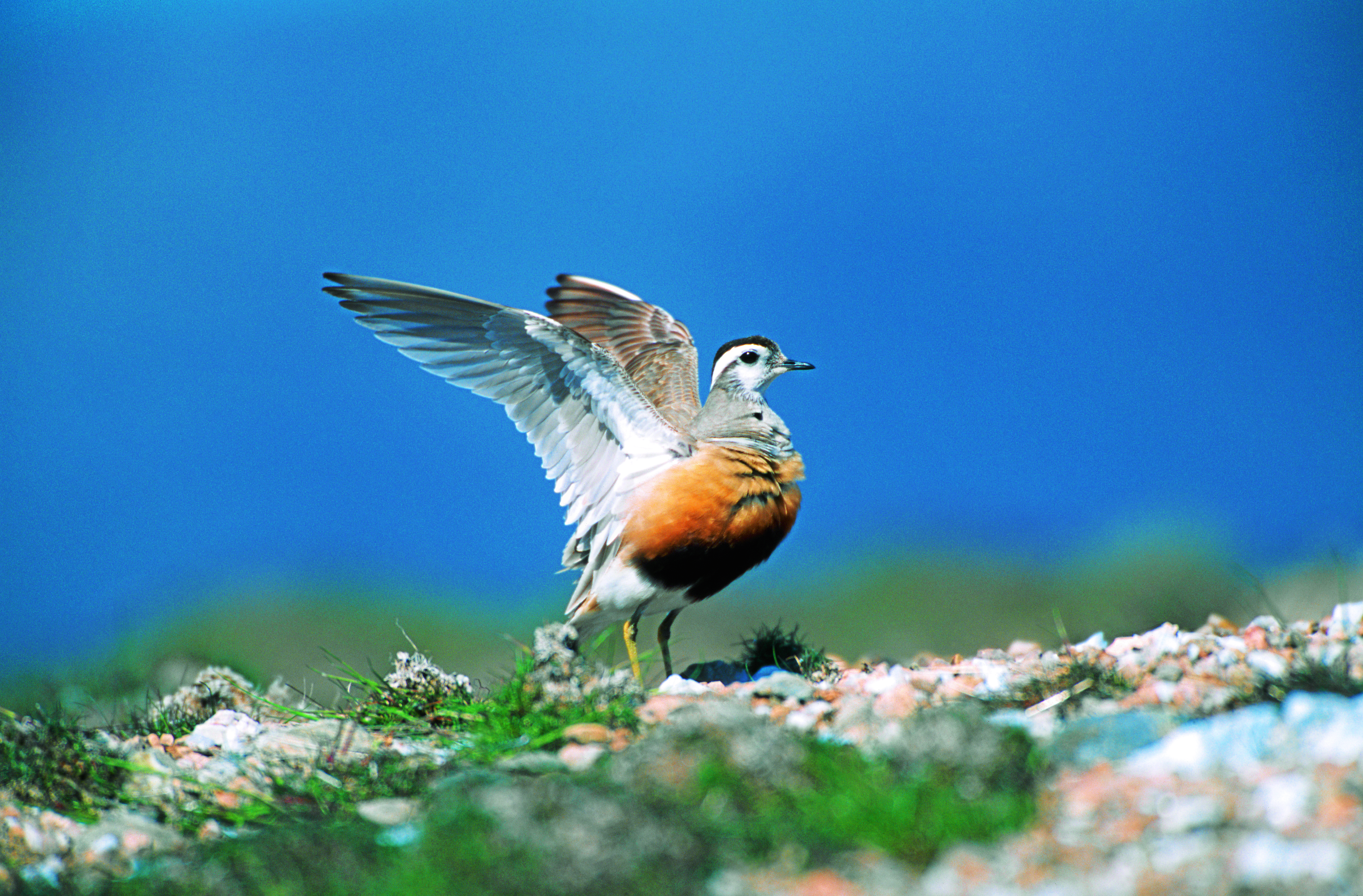
“From herons to goldcrests”
Back in Stirling in February, the alder-propped willow tree acquired temporary midwinter foliage. I have watched all manner of birds pause in that tree over the years, from herons to goldcrests, and including peregrine falcons and sparrowhawks, redwings and fieldfares and waxwings, and all the four-season natives of the wood.
All the way from here to the oakwoods just beyond Callander in the shadow of Ben Ledi (the first and last of Highland mountains as I see it), large foraging flocks or small birds career through any substantial wood on winter hunting missions. One of these had just paused en masse in the willow, and in such numbers that it looked as if it was suddenly smothered in un-willow-like leaves.
This being a late afternoon stroll rather than an early morning forced march, I had more time to stand and stare, and – crucially – I had binoculars. In the tree were four species of tits, bullfinches, goldfinches, chaffinches, siskins, tree creepers, goldcrests, and – as far as I could see – two nuthatches. The flock was not feeding, but it was making a great deal of noise. Then a mob of starlings about 200-strong arrived and took possession of the top of the tree.
Oaks, sycamores and chestnuts
A couple of hundred yards from the willow, up at the top of the bank at the back of the wood, are some of its tallest trees, mostly oaks, sycamores and chestnuts. In one of these, buzzards have nested for the last few years, and the young birds patrol the wood right through the winter until their parents forcibly evict them.
They’re not really very good birders, and prefer the grey squirrels and rabbits, but in the coldest weather, several hundred birds in a single tree is worth a speculative flypast at the very least. A young buzzard duly emerged in a long, low glide, as if it had been studying a sparrowhawk instruction manual, and lifted up from the dead reeds that throng the heart of the wood behind the willow.
The result, of course, was chaos. The starlings started it, and the rest took their cue, and at once the buzzard was the centre of a dense mesh of birds flying in every direction, above, below, ahead and behind. The buzzard screeched once, and that seemed to have the effect of helping it to force a path through the bird-mist, and up and out into the clear air, where the chaos finally dispersed, and the wood grew quiet.

“Teeth on aspens”
There is a third category of willows in my nature writing life, and ever since November 24th last year, it has assumed a critical importance. On that day, the Scottish Government announced that it recognised the beaver as a native species. The Scottish Government gave the beaver permission to stay and legal protection. And when beavers can’t get their hands (and their teeth) on aspens, their next most favourite food of choice is willow.
Just before the announcement, (and, slightly mischievously, just after) I had been writing in The Courier about a farmer on the Carse of Gowrie, who, not content with demolishing a beaver dam on a burn at the edge of his land, took to demolishing the landscape too. For rather than allow the beaver to pick and choose from the standing timber and vegetation from the steep banks of the burns, he brought in the diggers and clearfelled stretches of bank so that it became a perilous wall of bare earth rather than a secure slope strengthened by the trees’ root systems. This was how crazy the situation had become.
“Plant willows, watch them grow”
But the willow is a generous creation. If you want a copse of willow trees, stick some willow cuttings in the ground, stand back and watch them grow. It is a lovely irony that one of the favourite foods of the animal the farmer chose to harass rather than watch and learn from, is also his best hope for undoing the damage he inflicted on the banks. Plant willows, watch them grow, watch them heal the shorn landscape.
How many times do we have to re-learn the same basic truth, which is that nature is smarter than us, that mostly it knows what it is doing and what the consequences of its actions will be, whereas when we interfere with its essential principles, we have mostly know idea what the consequences will be.
So often, conservation is about fighting a rearguard action. Reintroducing the beaver is a glorious moment for celebration. We will find over the years that it brings unimaginable benefits to wild – and not so wild – Scotland. One of the accidental benefits will also be that from the Carse of Gowrie at sea level, to all the woods of the Lowlands, and to the very uppermost reaches of our Arctic-tinged land, we will develop a new and lasting respect for the willow, in all its varied glories.
You can read more of Jim Crumley’s Scottish wildlife columns
online here, and each month in The Scots Magazine.


